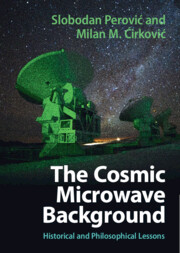Book contents
- The Cosmic Microwave Background
- The Cosmic Microwave Background
- Copyright page
- Epigraph
- Contents
- Acknowledgments
- Introduction
- Part I Physical cosmology: A brief introduction
- Part II Discovery of the CMB and current cosmological orthodoxy
- Part III What constitutes an unorthodoxy? An epistemological framework of cosmology
- Part IV Moderate unorthodoxies: The CMB with the Big Bang
- Part V Radical unorthodoxies: The CMB without the Big Bang
- 18 Motivations
- 19 Hoyle–Narlikar theory and the changing masses origin of the CMB
- 20 Revised steady state
- 21 Closed steady-state models
- 22 CMB in plasma cosmology
- 23 CMB in non-expanding models
- Part VI Formation of the orthodoxy and the alternatives: Epistemological lessons
- Part VII Other philosophically relevant aspects of the CMB
- Book part
- Notes
- References
- Index
21 - Closed steady-state models
from Part V - Radical unorthodoxies: The CMB without the Big Bang
Published online by Cambridge University Press: aN Invalid Date NaN
- The Cosmic Microwave Background
- The Cosmic Microwave Background
- Copyright page
- Epigraph
- Contents
- Acknowledgments
- Introduction
- Part I Physical cosmology: A brief introduction
- Part II Discovery of the CMB and current cosmological orthodoxy
- Part III What constitutes an unorthodoxy? An epistemological framework of cosmology
- Part IV Moderate unorthodoxies: The CMB with the Big Bang
- Part V Radical unorthodoxies: The CMB without the Big Bang
- 18 Motivations
- 19 Hoyle–Narlikar theory and the changing masses origin of the CMB
- 20 Revised steady state
- 21 Closed steady-state models
- 22 CMB in plasma cosmology
- 23 CMB in non-expanding models
- Part VI Formation of the orthodoxy and the alternatives: Epistemological lessons
- Part VII Other philosophically relevant aspects of the CMB
- Book part
- Notes
- References
- Index
Summary
G.F.R. Ellis’s late 1970s exploratory model, the topic of the chapter, reverse-engineered the current state of the universe into an inhomogeneous static state with two centers located at the opposite sides and our galaxy very close to one of them. This relativistic framework attempted to bypass the cosmological principle as an unjustified assumption while agreeing with the observations, including the measurements of the CMB, and offering alternative explanations of the key parameters (e.g., the observed redshift of galaxies has a gravitational origin). In the model, the CMB photons are continuously produced at one center (singularity) and annihilated at the other. Variations of the model were worked out, and another model similar in spirit was devised by Phillips in the 1990s. It introduced two singularities (poles) and two kinds of matter that circulate across the universe from one center to another. The hot plasma near the singularity acted as a perfect black body radiating the redshifted CMB. The chapter discusses the epistemic virtues of these models (e.g., the “natural” origin of CMB photons as in the orthodox approach) and their observational refutation and mentions a related model by P.C.W. Davis.
Keywords
- Type
- Chapter
- Information
- The Cosmic Microwave BackgroundHistorical and Philosophical Lessons, pp. 118 - 123Publisher: Cambridge University PressPrint publication year: 2024



